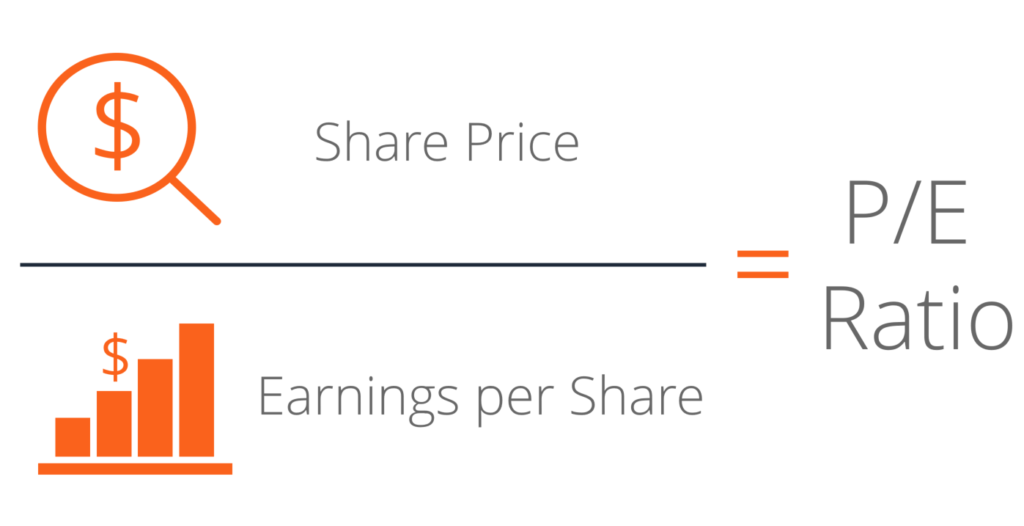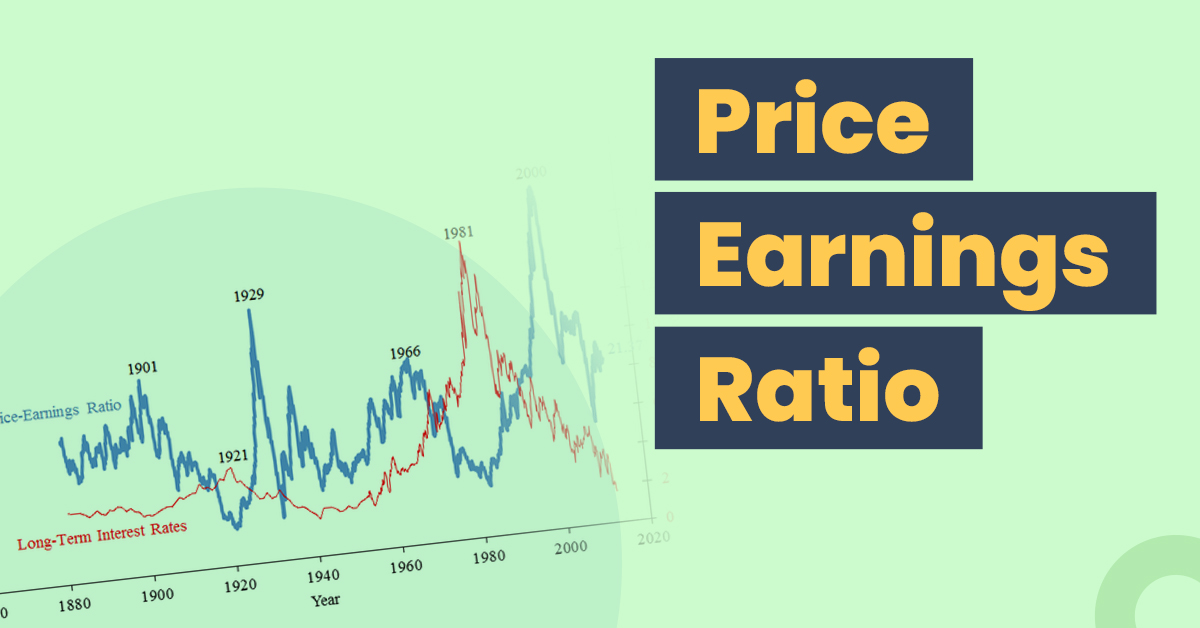Introduction of Price-to-Earnings (P/E) Ratio,
Price-to-Earnings (P/E) Ratio forex market mein bhi istemal hota hai, lekin iski tafseel aur istemal thoda mukhtalif hota hai. Yeh ratio investors ko batata hai ke ek currency pair ki value kitni hai uske earnings ke nisbat. Forex market mein P/E ratio ka istemal fundamental analysis ke hisse mein hota hai.

Use of Price-to-Earnings (P/E) Ratio in Forex,
Forex market mein P/E ratio ka istemal kisi company ki stock valuation ki tarah nahi hota, balki iska istemal ek mulk ki currency ki strength ya weakness ka andaza lagane ke liye hota hai.is mein Exchange Rate wo hota hai jo ek currency ko doosri currency ke sath compare karta hai. Economic Indicators mein include ho sakti hain mulk ki GDP, employment rate, inflation, aur interest rates. Agar P/E ratio zyada hai, toh yeh indicate karta hai ke currency strong hai, aur agar kam hai toh yeh indicate karta hai ke currency weak hai.Forex market mein bhi forward P/E ratio ka istemal hota hai jise future expectations ko evaluate karne ke liye use karte hain. Ismein analysts future economic indicators ko dekhte hain aur uske hisab se currency pair ki future value ka andaza lagate hain.
Impact of Economic Data on Forex Price-to-Earnings (P/E) Ratio,
Forex market mein P/E ratio par asar dalne wale economic data kai hote hain.
Risks and Limitations in Forex Price-to-Earnings (P/E) Ratio Analysis,
Forex P/E ratio ka istemal karte waqt kuch risks aur limitations bhi hain jo darj zail hain:
Forex market mein P/E ratio ek ahem tool hai jo investors ko currency pairs ki value ko samajhne mein madad karta hai. Iska istemal karte waqt economic indicators, political events, aur market sentiment ka bhi dhyan rakhna zaroori hai. P/E ratio ke sahi tajaweez se investors market trends ko samajh kar apne trading decisions ko improve kar sakte hain. Yeh ek important element hai jo traders ko market conditions ko analyze karne mein madadgar sabit ho sakta hai.
Price-to-Earnings (P/E) Ratio forex market mein bhi istemal hota hai, lekin iski tafseel aur istemal thoda mukhtalif hota hai. Yeh ratio investors ko batata hai ke ek currency pair ki value kitni hai uske earnings ke nisbat. Forex market mein P/E ratio ka istemal fundamental analysis ke hisse mein hota hai.
Use of Price-to-Earnings (P/E) Ratio in Forex,
Forex market mein P/E ratio ka istemal kisi company ki stock valuation ki tarah nahi hota, balki iska istemal ek mulk ki currency ki strength ya weakness ka andaza lagane ke liye hota hai.is mein Exchange Rate wo hota hai jo ek currency ko doosri currency ke sath compare karta hai. Economic Indicators mein include ho sakti hain mulk ki GDP, employment rate, inflation, aur interest rates. Agar P/E ratio zyada hai, toh yeh indicate karta hai ke currency strong hai, aur agar kam hai toh yeh indicate karta hai ke currency weak hai.Forex market mein bhi forward P/E ratio ka istemal hota hai jise future expectations ko evaluate karne ke liye use karte hain. Ismein analysts future economic indicators ko dekhte hain aur uske hisab se currency pair ki future value ka andaza lagate hain.
Impact of Economic Data on Forex Price-to-Earnings (P/E) Ratio,
Forex market mein P/E ratio par asar dalne wale economic data kai hote hain.
- GDP Data, Agar ek mulk ka GDP tezi se badh raha hai, toh iska P/E ratio bhi zyada ho sakta hai, indicating a strong currency.
- Interest Rates, High interest rates bhi ek strong currency ko support karte hain, aur iska P/E ratio ko bhi asar hota hai.
- Inflation Rates, Moderate inflation rates generally have a positive impact on a currency's P/E ratio, while high inflation rates can weaken a currency.
Risks and Limitations in Forex Price-to-Earnings (P/E) Ratio Analysis,
Forex P/E ratio ka istemal karte waqt kuch risks aur limitations bhi hain jo darj zail hain:
- Volatility:Forex market inherently volatile hoti hai, jiski wajah se P/E ratio mein tezi se tabdeel hone ki sambhavna hoti hai.Political Events:Unexpected political events, geopolitical tensions, ya economic crises bhi P/E ratio par asar daal sakte hain.
- Market Sentiment: Market sentiment ka bhi asar hota hai, jiski wajah se P/E ratio mein fluctuations aati hain.
Forex market mein P/E ratio ek ahem tool hai jo investors ko currency pairs ki value ko samajhne mein madad karta hai. Iska istemal karte waqt economic indicators, political events, aur market sentiment ka bhi dhyan rakhna zaroori hai. P/E ratio ke sahi tajaweez se investors market trends ko samajh kar apne trading decisions ko improve kar sakte hain. Yeh ek important element hai jo traders ko market conditions ko analyze karne mein madadgar sabit ho sakta hai.




تبصرہ
Расширенный режим Обычный режим